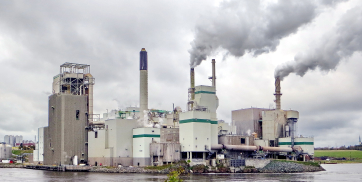Introducing
Highwood Emissions Management is pleased to introduce The Highwood Glossary. Terminology for greenhouse gas (GHG) emissions management in the oil and gas industry can be confusing and inconsistent. The Highwood Glossary proposes a standard set of terms and definitions to help industry, regulators, innovators, and academics in different parts of the world speak the same language.
Evolving Emissions Terminology
After decades of similar progress by industry, regulators, and academics, many fields of emissions management have been developed independently — this simultaneous progress has resulted in diverse and often duplicated terminology. Biologists have encountered the same problem, and they solved it with ‘binomial nomenclature’. For example, the species Alces alces is known colloquially as moose in North America or Elk in Europe. As with other fields, such as geology, law, and medicine, clear and concise definitions are important for collaboration. In the emissions management industry, the term ‘quantification’ can have alternative meanings to different people and organizations – for example, it is commonly used for (1) measurement-based emission rate estimation, (2) estimating mixing ratios of methane in ambient air, and (3) combining emission factors with activity factors in a bottom-up inventory to estimate total emissions. This is an example of the numerous definitions and terms related to methane and emissions which have emerged in various regulations, guidance documents, and internal stakeholder documents. However, the lack of a universally accepted and easily accessible glossary has presented a challenge in emissions management.
A Succinct Glossary that Works
Fluid definitions should not be a barrier to managing emissions, and therefore we provide a concrete glossary of terminology related to the GHG industry. The Highwood Glossary is intended to be focused on defining and standardizing terminology related to methane emissions. By bringing together diverse stakeholder perspectives, we have compiled the Highwood Glossary as a tool for consistency and clarity. Although many of these terms have colloquial meanings, as well as context-specific technical definitions, Highwood’s glossary defines consistent vernacular specifically in the context of GHG emissions. This glossary provides a foundation for industry standardization and transparency, allowing for greater understanding and communication between stakeholders regarding the complexities of GHG emissions. For professionals seeking to make informed decisions about reducing or managing GHG emissions, the Highwood Glossary is a unified resource.
Always Collaborating and Improving
Language exists in a state of flux — science and engineering terminology is no exception. With technology and research in emissions progressing at an accelerating rate, the Highwood Glossary will continue to exist in a state of adaptation. We want the Highwood Glossary to be collaborative; although our team at Highwood is continually reviewing candidate entries, we are always open to feedback. If you have a suggestion on how we can improve the next update, please reach out!





